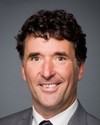Great.
Good afternoon.
Thank you for inviting me to be part of this important study on the protection of children and youth in developing countries.
World Vision Canada, for those of you who don't know about us, is a Christian relief, development, and advocacy organization operating as a federation in about 100 countries. We use a long-term community-based development model. We are a child-centred organization committed to protecting children from abuse, neglect, exploitation, and other forms of violence. We're really thrilled to be here for this committee meeting.
Today I want to share some recommendations on the role that Canada can play to ensure that children and youth are safe from harm. To understand the approach that's required, I'll begin with a story from Bangladesh, where I was recently.
Shabira, currently 15 years old, is from a very poor family. As a child she worked in a shrimp factory to help earn extra income for her family. After years of struggle, Shabira's aunt sold her to a brothel in India. She was exploited sexually there for a year until police found her and took her to a nearby shelter.
With no education, Shabira didn't understand what was happening to her. Desperate to get home to her parents in Bangladesh, she left the shelter. She reached out to a group of men to help her, and they ended up raping her.
When some community members found her and heard her story, they brought her to World Vision volunteers, who put her in touch with World Vision India, who made the connection with World Vision Bangladesh so that she could be repatriated back to her family in Bangladesh. Once home, she received medical attention but was too young to understand what had happened to her.
At 15, Shabira is now a young adolescent with physical and emotional scars.
I love working for World Vision, but it's stories like this that break my heart. I'm sharing this story as a way to help us understand the interconnectedness in the issue of child protection. I wish there was just one thing we could do that could protect children like Shabira, but what we've learned from our experience is that it takes a holistic approach to address issues of child protection. This approach starts with the child first.
You know, when I try to explain the systems-based approach to my mother, it's hard. The other day, when I was trying to explain it in a family setting, I said, you know, what we mean by a systems-based approach is that there can't be just one thing done for a girl like Shabira. The systems-based approach is with a child at the centre: we strengthen that child and we strengthen the protective environment around that child.
That includes different elements. It includes her parents—you had questions before about the role of the parents—it strengthens the community, it strengthens the government and different bodies within the government, and it strengthens international bodies. So it takes strengthening the child and strengthening that protective system, that protective shield, around the child.
Shabira's story shows just some examples of how complex and interrelated child protection issues are. We know that it's impossible to treat any of these issues in isolation.
Let me give you just a few examples of the interventions World Vision uses with children like Shabira. Like many girls in her community,
The fact that Shabira has never set foot in a classroom limits her potential and makes her vulnerable to exploitation once again. Our work involves providing her with good quality education and professional training so that she can acquire the skills she needs to fulfill her dream of working in a small business.
We're also engaging local and national governments to not only enact but to enforce legislation that would increase the minimum age of marriage for girls to 18.
Through Citizen Voice and Action, World Vision's approach to local-level advocacy and local government accountability, we're mobilizing girls, boys, parents, and leaders to change discriminatory gender norms and create alternative social, economic, and civil opportunities for girls. These provide a small sample of the many interventions needed to help somebody like Shabira reach her full potential, and create that safe environment for her and so many like her.
With regard to World Vision's recommendations, there is no silver bullet for addressing child protection, but the Government of Canada can continue to make a contribution to efforts that build that protective environment for children by taking action in diplomacy, trade, and in development.
We would like to highlight three areas where Canada can make real and lasting change for protecting children. The first is to eliminate the worst forms of child labour by investing in vocational training and increasing safe and decent employment opportunities for youth. Second is to prevent harmful practices, such as child marriage, by investing in birth registration and in education, both formal and informal. Last is to protect children in emergencies by prioritizing child-friendly spaces.
On eliminating the worst forms of child labour by investing in skills training and increasing safe and decent employment opportunities for youth, ending child exploitation and child slavery are top priorities for World Vision. It is also a priority for Canadians. Through our No Child For Sale campaign, we have learned that Canadians are deeply engaged on this issue. They have asked us to work with key players to protect children from hazardous conditions. In fact, a recent Ipsos Reid poll showed that 86% of Canadians want the Canadian government to play a role in making sure that Canadian companies don't directly or indirectly support poor labour practices in other countries, including using child labour.
We're seeing good results from combined efforts. Recent statistics indicate that the number of children working in dangerous, dirty, and degrading jobs has actually dropped, from 115 million children to 85 million children, since 2008. However, progress is not fast enough. There are 85 million children still suffering in the worst forms of child labour. We're not talking about paper routes here or jobs on the farm. These are dirty, dangerous, and degrading jobs. We encourage Canada to join with World Vision to address child labour as an urgent global priority.
As a starting point, Canada can help to fully implement the 2016 International Labour Organization's road map for achieving the elimination of the worst forms of child labour, by doing two things: continuing to develop and invest in education and skills-based training opportunities for children and youth and supporting employment creation and livelihood diversification for youth to access safe and decent employment.
World Vision's goal is to continue to promote a dialogue on child protection, with both the private sector and with Canadians, to ensure that the worst forms of child labour—dirty, dangerous, and degrading labour—can be traced in global supply chains. This isn't easy. We're not exactly sure how to make that happen, but we want to start the dialogue.
Second, I want to highlight the importance of preventing harmful practices, such as child marriage, by investing in birth registration and in education. Canada has shown real leadership on ending child early and forced marriage.
Child marriage, early marriage and forced marriage constitute a violation of children's rights. They are also a major obstacle to the reduction of poverty and, more generally, to the achievement of development objectives.
Beyond its engagement with the United Nations, we encourage the government of Canada to invest in formal and informal education, especially for girls, in both long-term development and humanitarian responses. Supporting girls and boys to enrol in school enables them to broaden their choices in life, and develop the skills, knowledge, and confidence they need to help break the cycle of poverty.
We appreciate Canada's generous support to the No Lost Generation initiative as a concrete example of how investing in education can be done in fragile states.
It's important to emphasize that in situations where children do not have the option to attend formal school, we need to invest in flexible, informal education—such as peer-to-peer learning—that offers children life-skills-based education.
We also encourage Canada to support universal birth registration as a key tool in making sure that all children have legal protection against exploitation. As we have found with our investments in maternal, newborn, and child health, a critical aspect in mothers and children getting the help they need requires knowing who they are.
Finally, there is protecting children in emergencies by prioritizing child-friendly spaces. A child like Shabira would be faced with unique child protection issues if Bangladesh were hit by a flood or engulfed in a conflict.
World Vision has long been recognized, for more than 50 years, in fact, for its ability to respond to humanitarian emergencies. Our experience has shown us that, because of the complexity of emergency situations and of their consequences for children, the process of prevention must focus on making children and their families aware of the dangers of violence and sexual exploitation, of human trafficking, of child labour. It must also focus on ways in which they can protect themselves.
Sadly, conflict continues to destroy the social fabric of communities, and many children are separated and without the protection of caring adults. This exposes them to high levels of violence, including gender-based violence, exploitation, abuse, and deprivation.
In times of humanitarian need, one practical thing Canada can do is ensure that creating safe spaces for boys and girls is prioritized as a key life-saving intervention. World Vision's child-friendly spaces serve as an important means of providing care, support, and protection for children in emergencies.
In conclusion, I want you to imagine the hundreds of children I have met as though they were sitting beside me and behind me, children who wish that they could speak to you themselves—that they had the opportunity I have right now—about what it takes to build their protection. We need to keep looking for new and innovative ways to work together to reach our goal of ending the worst forms of child labour by prioritizing skills-based training and increasing opportunities for youth to access safe and decent employment. Each of us has a responsibility to protect children, especially those who are most vulnerable.
World Vision, along with other partners, is collaborating with national governments and communities to strengthen the environment that will protect children and prevent them from being harmed. We've been encouraged because children and families are using their voices to advocate for change in their communities.
World Vision's No Child For Sale campaign points to the fact that Canadians are ready to take action to protect children and expect their leaders to protect children as well. There is a consensus that no child should be for sale. Let's say that my hand shows the child and each finger shows the parts we have to play: strengthening the child, strengthening that protective system, strengthening the family, and strengthening the communities, the government, and the international bodies. My pinky finger represents strengthening the participation of you and me as individuals and shows that we all have a part to play in protecting children.
Thank you for inviting World Vision Canada to be here today and for including our perspective in this important study. I look forward to your questions.






